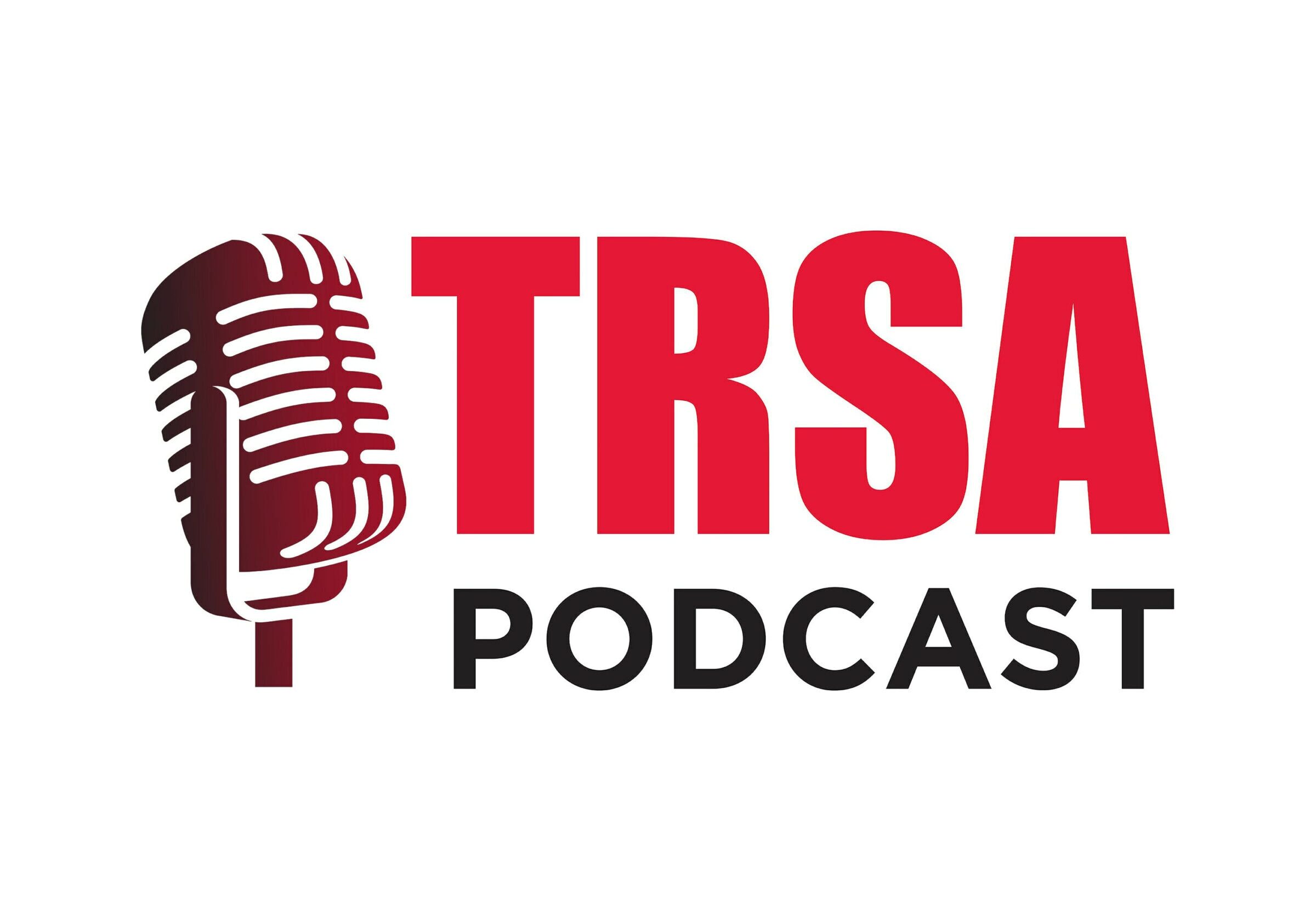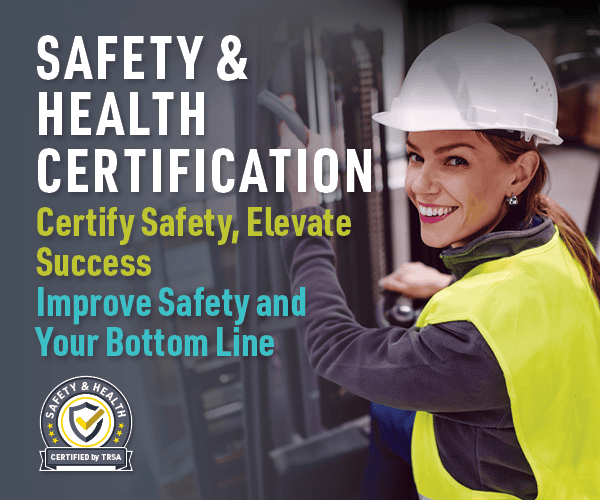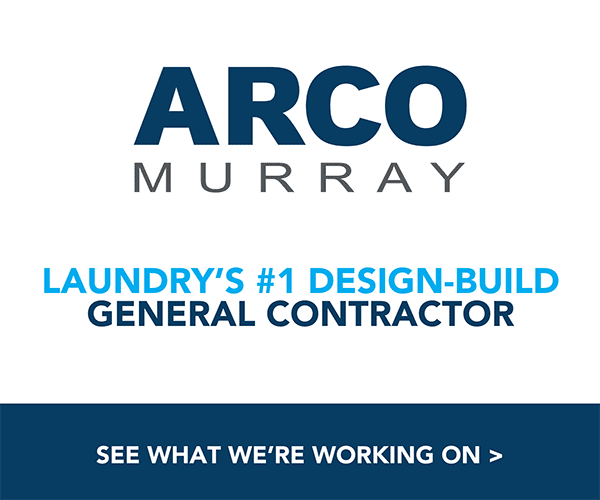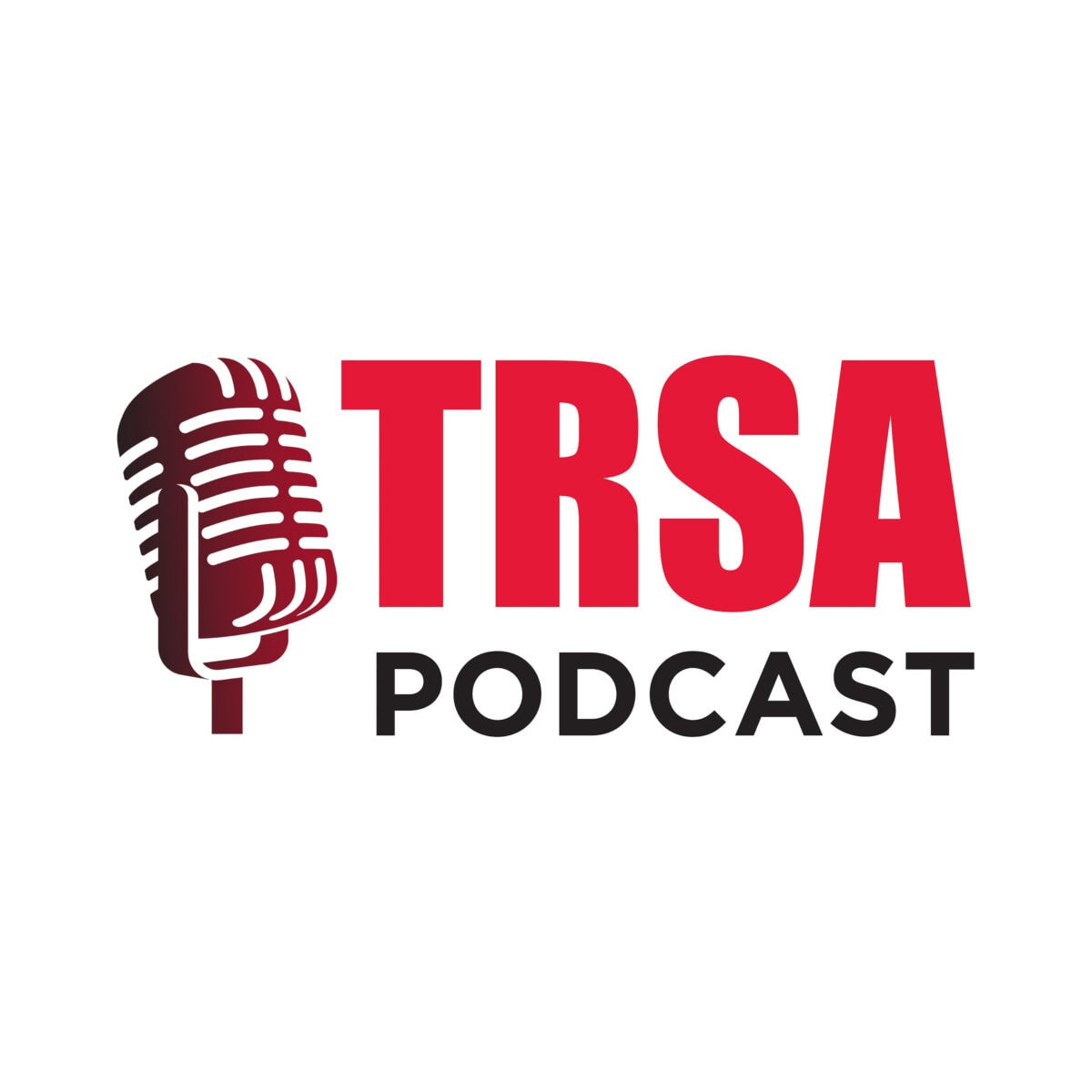Dr. Mario D. Wallace, the founder of the consulting firm All Things Strategic, discusses fostering a collaborative, inclusive environment at your workplace, as well as aligning your company’s human resources initiatives to your organization’s overall strategic goals and objectives. Dr. Wallace has more than 20 years of small-business consulting experience and 11 years of healthcare-consulting experience. He is currently the principal strategy consultant at Ohio State University in Columbus, OH.
Welcome to the TRSA podcast. Providing interviews and insights from the linen, uniform, and facility services industry. Most Americans might not realize it, but they benefit at least once per week from the cleanliness and safety of laundered, reusable linens, uniforms, towels, mats, and other products provided by various businesses and organizations. TRS a represents the companies that supply, launder, and maintain linens and uniforms. And in this podcast, we will bring the thought leaders of the industry to you.
Thanks for joining us today for another episode of the Linen Uniform and Facility Services podcast, interviews and insights by TRSA. I’m your host, Jason Risley. On today’s episode, we’ll discuss fostering a collaborative, inclusive environment at your workplace as well as aligning your company’s human resources initiatives to your organization’s overall strategic goals and objectives. Joining us is doctor Mario d Wallace, the founder of the consulting firm All Things Strategic. Doctor Wallace has more than 20 years of small business consulting experience and 11 years of healthcare consulting experience.
He has considerable expertise in the areas of process improvement, change management, leadership development, medical education, program instructional development, and strategic management. Doctor Wallace is currently the principal strategy consultant at the Ohio State University in Columbus, Ohio. Are we practicing psychological safety? That’s a key concept. Are we practicing that in our organization?
There are several thought leaders on psychological safety, and but this particular model actually supports all the thought leaders as it relate to psychological safety. Timothy Clark, this is his 4 stage of psychological safety model, and in his research, he identified that there is 4 things that has to take place to create a more psychologically safe environment. And one of the first element is inclusion safety. People need to feel that they belong. People need to be included in some of the work that we would like them to do.
Sometimes people don’t feel as if they belong in the space and they don’t feel included, and it’s communicated based on people having special people in the organization who they actually work with. But once we get through inclusion safety, and here’s the thing, according to his research, people need permission to actually go to each stage of this particular model. As permission increase, so does respect. This is what the model is communicating. But as we go from inclusion safety, each person has to have some form of permission to go from one stage to the next.
We go on to learner safety. Learner safety is when we’re allowing people to actually go entertain certification, go to different trainings, be coached, be developed into into new roles and new positions. We have to provide a sense of learner safety in the organization so people can feel that they’re moving, that they’re growing and moving and advancing in an organization. Once we’ve provided the in the learner safety, once they feel that they’ve grown in knowledge, they’ve grown in skills and competencies and attributes, and they can contribute to organization, the next phase is to allow them start contributing to the organization. So that’s called contributor safety.
Now they have, they can contribute it. You welcome the things that they’re doing, the ideas that they that they bring to the organization, and they feel a sense of contribution because they can tell you ideas and and you will listen to those ideas. And sometime you will implement those ideas if those ideas can help advance the processes, the procedures, or the goals of the company. But once they begin to contribute to an organization, the last phase is to challenge your safety. This is a phase of the stage in which people feel that they can disagree with their leader without retribution.
Meaning, they’ve come to the point that you’ve included them in the first stage. You’ve allowed them to learn and grow. You sent them off to get certifications, certificates, degrees, practical experience within organization, Then from that knowledge, they begin to add contributions to the organization. You allow them to to share with you certain things, different ideas, different concept that they are seeing on the floor, and you you allowing those ideas to be implemented. But then it comes challenger safety.
And that is one of the hardest one when when leaders are so open in a psychologically safe environment that they can introduce a concept to a team of people, and one person may meet with the leader afterwards and say, I like the concept you’re doing, but I think we can do it a better way. Do we have an environment in which we can have that conversation? That is considered psychological safety, and we’ll get more into the actual descriptions of each one in detail. Inclusion safety members feel safe to belong to a team. They are comp they’re they’re comfortable being present.
Do not feel excluded, feel like they are wrong and appreciated. Learning safety. Members can learn through asking questions. Team members here may be able to experiment and admit small mistakes and ask for help. Contributor safety members feel safe to contribute to their own ideas without fear or embarrassment or ridicule.
This is more a challenging state because volunteering your own ideas can increase psychosocial social vulnerability of team members, and lastly, members can question others including the authorities about the ideas. So this is a concept that we want. We want to have be a more of a collaborative, more not just top down, we need to be more collaborative and more locally innovative, meaning allowing people, if we see high performance in a new process on the floor, the people who are doing the work, we need to look at what their high performance is and try to grab it and clone it and use it as a concept to introduce back to the people to actually speed up performance in organization. So all 3 work is always gonna be top down from leadership from the org chart perspective, but when it comes to work teams and teaming, we need to really drive and start shifting to those areas if we have not. Now let’s let’s go a little deeper, aligning intangible assets to a corporate strategy.
Organizations have 3 type of intangible assets. Those are the people, the way the people think, the talent and skills, information, technologies, whatever systems you have in the culture of your organization, and that’s in alignment with leadership. So when I think of a strategy, I don’t know if if how many of you are familiar with the balanced scorecard strategy management process. This is what I call a strategy map. And on this particular document, on this document, all the boxes are strategic goals and objectives.
So when we think of an organization, we tend to try to create a strategy for the organization so everybody can fixate on. And this document is is conserved as a communication tool, meaning each person in the organization need to have this this particular document on a lanyard or something. So that when a leader walks organization and asks the person, what are you working on and how does it advance a strategy, they can point to one of these boxes. This is what I do and how it advances strategy. Now most high performing organization looks at perform through 4 perspectives.
And you can see to your left, you have financial perspective, stakeholders perspective, internal process, the work that’s the value creation for the customer, and you have talent and technology that those are the people, the systems and technology. So we start at the top, the financials. We bucket certain financial objectives at the top. From a from a human resource perspective, it’s maximize the return on investments. And if you look all the way to the right, it’s minimizing HR costs on the organization.
Those are financial outcomes that we seek from a health HR unit. The thing about a strategy map is at the top, financially, the perspective of the finance, we think of long term and short term financial outcomes. Stakeholders or customers, we think of what’s the value that we’ve identified that we want to deliver to our customers. So we we create objectives there so the customer can measure that value. Internal processes, the work that we’re doing.
How are we consistently innovating? How are we consistently finding efficiencies to deliver greater value to our customers? And at the bottom, it’s time to technology. Do we have the right resources, the people? Do we have the right technology systems?
And do we have the right culture to actually do the work? This document is a cause and effect diagram, and it’s a road map. The bottom of the map are the people, the systems, and the tech the systems, technologies, and the culture. Those the people, the system technology are only valuable in the organization if they’re driving towards financial outcomes. So they have to have some type of cause and effect impact on on on this on the organization.
Let let me let me get be a little more specific here. So the top, the financial outcomes are considered tangible assets. Those are things that you can touch. The old balance sheet, the old managerial, outcomes are things that are tangible for an organization. Organizations in the past felt the only way you can determine success is by return on investment, return on invested capital, those things that have been exist existing for forever.
Today, organizations are more competitive based on intangible assets, and those are the people, the investment in leadership development, the technologies, and the culture. But the thing about the 2, they have to be aligned to the financial outcomes. If the tangible assets at the bottom, the people, the culture, and the technology systems, that’s policies and procedures, if they’re not aligned to the financial outcome, then you cannot evaluate your strategy. You cannot evaluate the success of your strategic plan. So what does it look like?
As it relates to our an organization being ready to perform, if you look at the bottom of this particular diagram, you have to align the people. You have to develop the skills and knowledge. You have to to make sure that you have the right culture. You have to make sure you have the right technology, and you have to make sure your leadership team is prepared. They can lead change, they understand organization health and wellness, and they all they understand how to drive strategy into an organization, how to translate strategy in an organization.
So when it comes to the people, let’s talk about the people for a second. So when it comes to the people, you have to align the people to the strategy. And how do we align them to the strategy? Based on certain objectives in your strategy, you have to determine who are the people that needs to be responsible for this specific objective within the strategic plan. That’s at the local level.
That’s at the enterprise level. Who are the people responsible? You align the people to the actual strategic objective in the plan. You determine what skills, competencies, and attributes they need to actually do the work. You determine how many people where it says number required, then you assess them on the competencies and skills needed to drive performance.
First, you look at your strategic plan, then you look at objectives within your plan that you need to align people to. So you look at specific positions that need to do certain specific work, then you determine what competencies they need to do the work, and then you assess them on those competencies. You cannot advance your strategy if only 10% of the people are ready in a specific area to advance your strategy. It’s not gonna advance the strategy. You’re gonna have low productivity.
You have low outcomes. You have low performance, and you have low engagement. You have to continue to assess. And based on where they are, you need to develop them where they are, and you have to get them to meet the standard of performance in order to drive performance in organization. So how do we do that?
Once we this is the assessment. Once we determine what the competencies are, we put them into some type of document, and we allow the people to assess themselves on one side, and then we, as the manager, assess them on the other side. Meaning, what are we assessing? With at the bottom, you see the key at the bottom, the legend. We’re assessing, can they teach others this particular skill?
Are they well rounded and can fly along on this specific skill? And are they limited and may need support? If we want them to teach others, we need to and they score low on that, may need support, we need to provide them the resources to help them to beta teach others. If we want them to fly along, that’s fine. But every area in which they need support, we need to provide the support they need in order for them to drive, to do the operational work within the organization, to to actually drive performance in that organization.
The last thing I want to talk about is this is is organizational readiness. We need to be able to assess if we’re ready as organizations to do the actual work. So we need to make sure that we identify what the culture is that we need to foster. We need to make sure that the leaders are aligned to the culture. We need to make sure that we’ve created team dynamics so that people can work in teams to be effective, and we need to make sure that that the leaders understand their role in the organization as it relates to drive performance in the strategy.
So we have to be able to measure performance and organizational readiness. For culture, we need to be able to conduct the engagement census and determine what the score is. For alignment, we need to beta make sure that the people have signed priorities. That means if it’s a 160 people, we need to make sure that at least 60 people are aligned. When it’s teamwork, we need to understand what the best practice, what the best practices should be, and we need to make sure that we are training, educating them on the best practice, and we need to have a measured outcome.
When it comes to leadership, we need to identify the gaps in leadership performance and assess them on those gaps and determine what those gaps are and to, you know, to get them to be able to provide the right service they need to drive strategy. If you have an interest in human resources issues, sign up for TRSA’s HR and Labor Management Summit Series. Final day of presentations will take place this Wednesday, May 3rd. Register online at www.trsa.org/ HR Summit. Recordings will be available in TRSA’s on demand learning center at the conclusion of the event.
Thanks again for tuning in, and if you liked what you heard on today’s show, please subscribe, rate, and review us on Apple Itunes, Google Podcasts, and Stitcher. For the latest news and information from the linen, uniform, and facility services industry, subscribe to our newsletter, Textile Services Weekly, and our monthly print publication, Textile Services Magazine. Additionally, don’t forget to follow TRSA on Facebook, LinkedIn, and Twitter.
Publish Date
May 1, 2023
Runtime
17 min
Categories
Sign Up For Our Newsletter
Receive the latest updates on the linen, uniform and facility services industry from TRSA delivered straight to your inbox.









